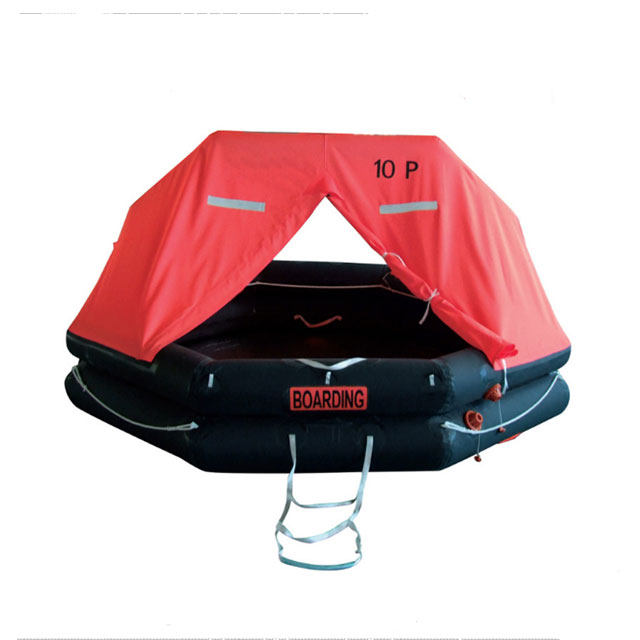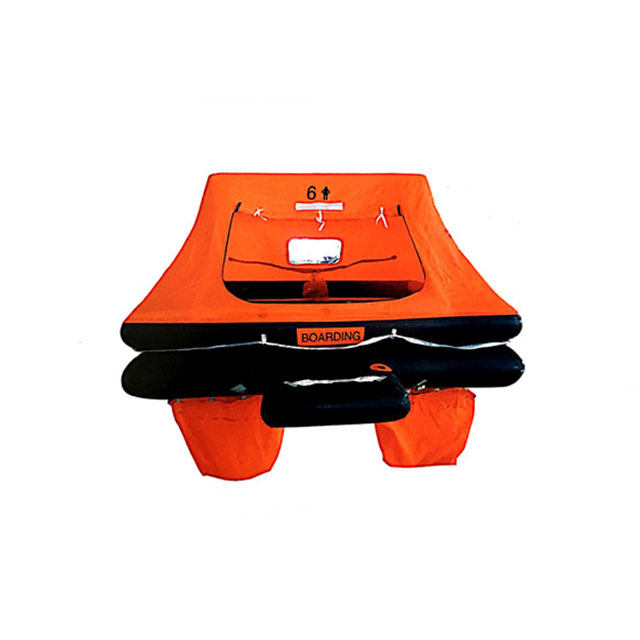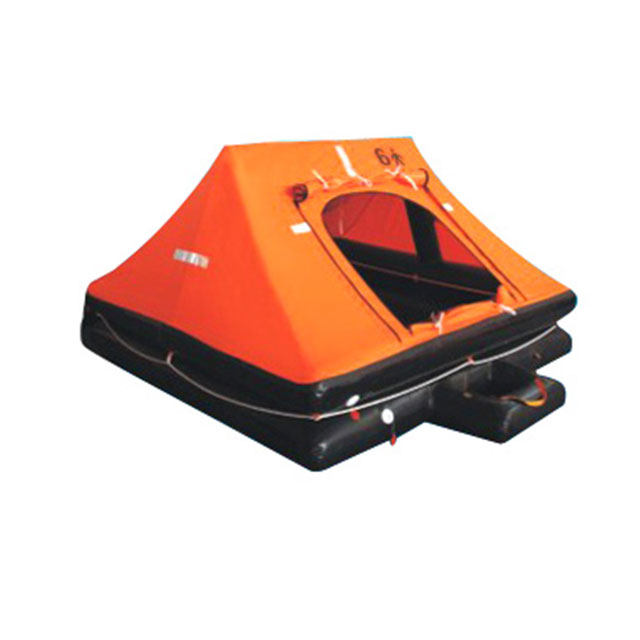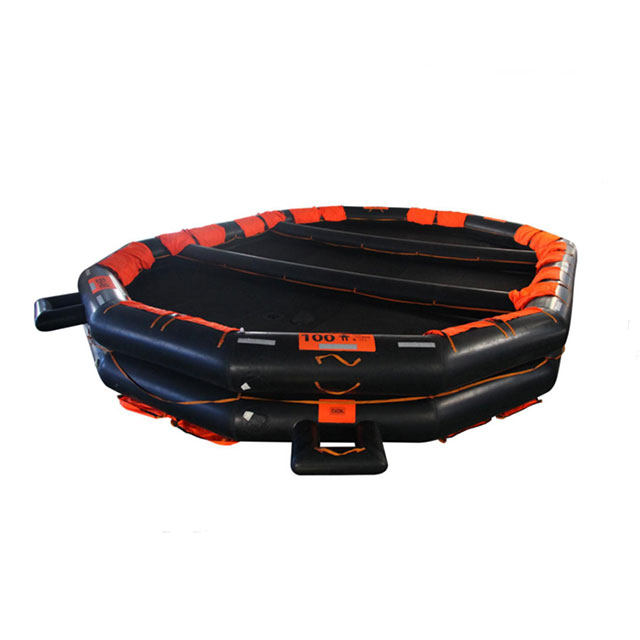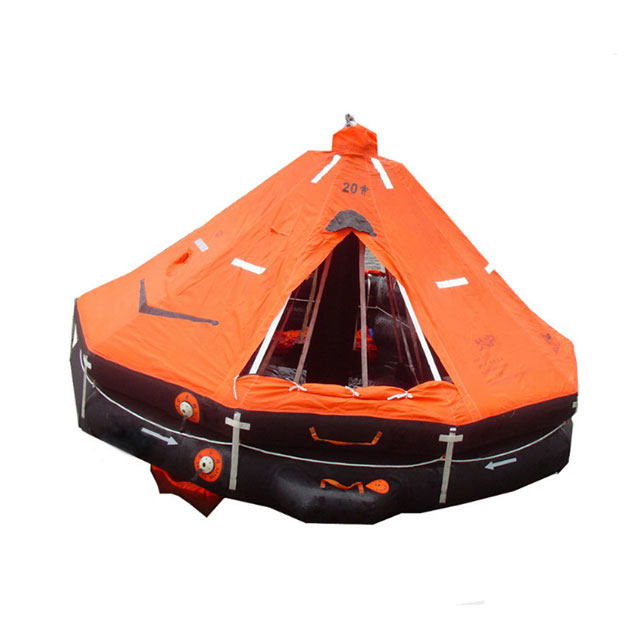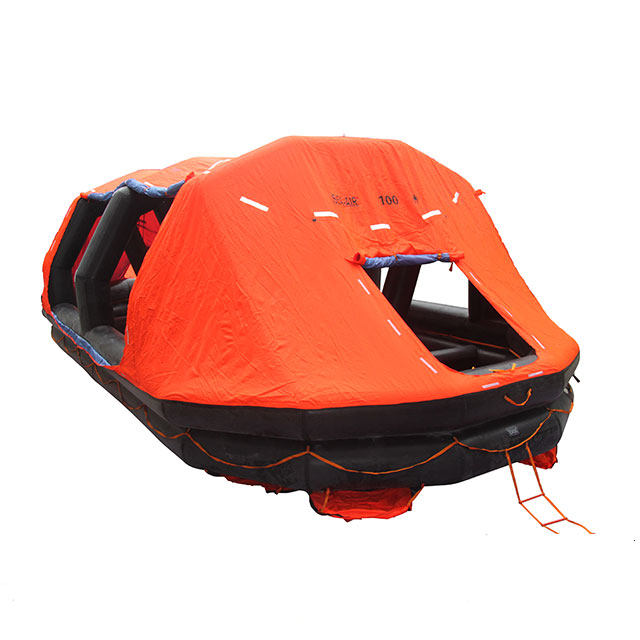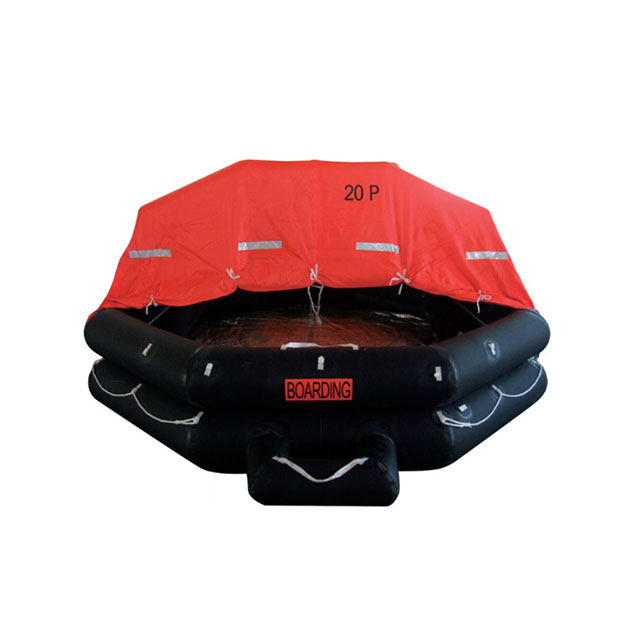How to Enhance the Durability of Inflatable Life Rafts in Harsh Weather Conditions
Inflatable life rafts are indispensable for maritime safety, designed to provide survival support during emergencies at sea. However, in harsh weather conditions, the durability of inflatable life rafts becomes a crucial factor in determining their effectiveness. High winds, freezing temperatures, intense heat, and saltwater exposure can significantly impact the performance and longevity of these life-saving devices. This article explores the advancements in materials, design, and technologies aimed at improving the durability of inflatable life rafts in harsh weather conditions.
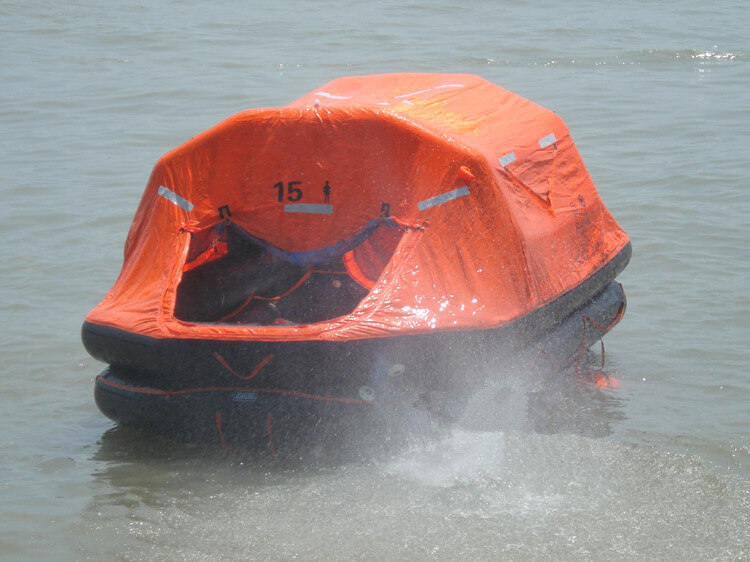
Table of Contents
Why the Durability of Inflatable Life Rafts in Harsh Weather Conditions is Important
This chart highlights how durability directly impacts the effectiveness, safety, and value of inflatable life rafts in adverse weather conditions.
| Aspect | Explanation |
| Safety of Occupants | Harsh weather conditions increase the likelihood of raft punctures or deflation. |
| Resistance to Environmental Factors | UV radiation, saltwater, and extreme temperatures can degrade materials over time. |
| Performance in Emergencies | Rough seas and strong winds can strain the structural integrity of life rafts. |
| Survivor Comfort | Insufficient durability may lead to water ingress, temperature fluctuations, or instability. |
| Prolonged Deployment | Rescue operations in remote locations may take hours or days. |
| Cost-Effectiveness | Fragile rafts require frequent replacement or repairs, increasing costs. |
| Compliance with Regulations | Maritime safety standards demand reliable performance in extreme conditions. |
| Rescue Visibility | Harsh conditions can obscure the raft from rescuers. |
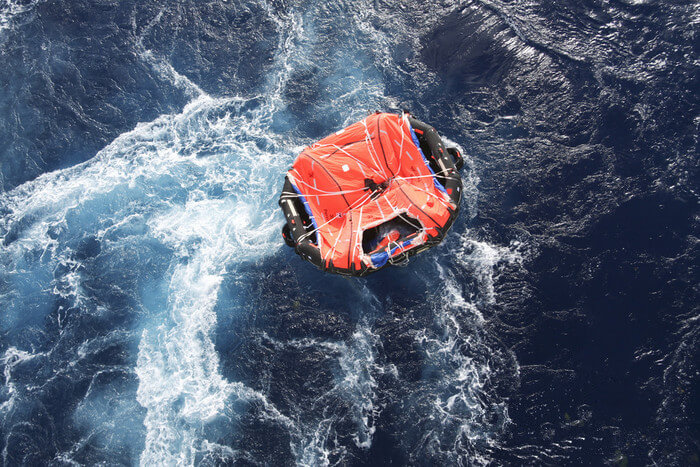
Key Strategies to Improve the Durability of Inflatable Life Rafts in Harsh Weather Conditions
1. Material Innovation for Enhanced Durability
The most significant challenge faced by inflatable life rafts in extreme conditions is the risk of punctures, wear, and degradation due to prolonged exposure to the elements. To combat these issues, manufacturers have developed advanced materials that are more resistant to harsh environments.
- High-Strength Fabrics: Traditional rubberized materials have been replaced or enhanced with high-performance synthetic fabrics like Hypalon (chlorosulfonated polyethylene) and polyurethane-coated fabrics. These materials offer superior resistance to UV radiation, abrasion, and punctures, ensuring that the life raft remains intact even under intense weather conditions.
- Corrosion-Resistant Coatings: The saltwater environment can cause rapid corrosion, compromising the structural integrity of the raft. New corrosion-resistant coatings and treatments are being applied to the metal components, such as valves and inflating mechanisms, making them less vulnerable to rust and corrosion, even with continuous exposure to seawater.
- Insulated Materials: For extreme cold environments, such as those encountered in polar regions, manufacturers are incorporating insulation materials within the raft’s structure. This helps prevent the raft from freezing, which can damage the material or make it unfit for use in cold-water emergencies.
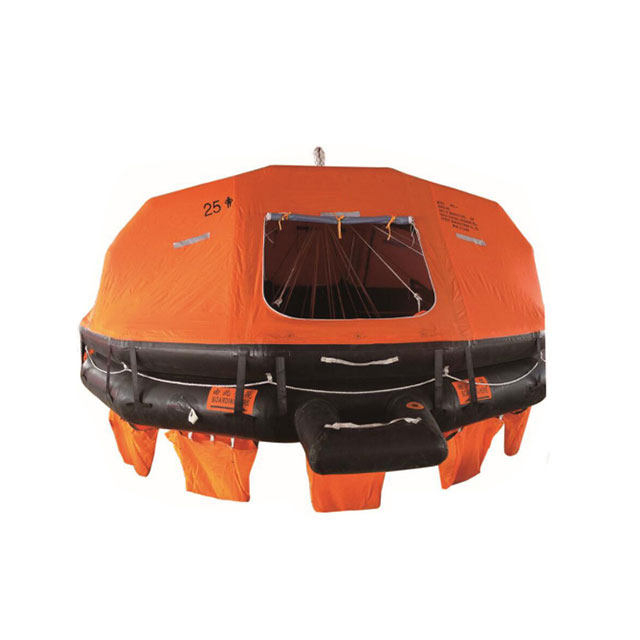
2. Enhanced Inflating Mechanisms
Inflatable life rafts rely on efficient inflation mechanisms that must function properly even in extreme weather. Improvements in inflation systems are critical for ensuring that life rafts remain inflated and accessible when needed most.
- Automatic Inflation Technology: Many modern life rafts are equipped with automatic inflation systems triggered by immersion in water. These systems are designed to activate quickly, even in freezing temperatures, ensuring rapid deployment in emergencies.
- Pressure-Resistant Inflation Chambers: To prevent deflation in high winds and turbulent waters, inflatable life rafts are increasingly being designed with multiple pressure-resistant chambers. These chambers are designed to distribute the weight evenly and maintain buoyancy even if one section of the raft is compromised.
3. Reinforced Design for Stability and Performance
Advancements in life raft design significantly improve their ability to withstand harsh environments. Multi-chamber construction ensures that a puncture in one section does not compromise the entire raft’s buoyancy. Modern designs incorporate hydrodynamic shapes that enhance stability in rough seas, reducing the risk of capsizing in high waves or strong currents. Ballast bags, filled with water during deployment, provide stability by lowering the raft’s center of gravity, even in turbulent waters.
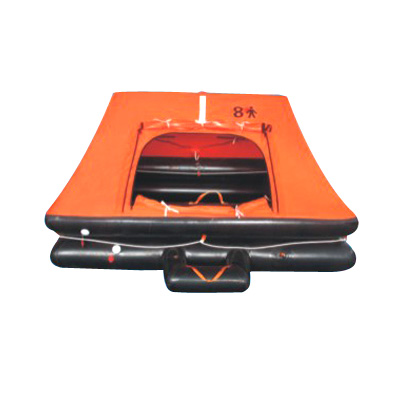
4. Safety Features for Harsh Environments
Incorporating additional protective features further enhances the durability of inflatable life rafts. Weatherproof canopies shield occupants from rain, intense sun, and freezing winds, providing critical protection in emergencies. Insulated flooring and thermal covers offer a barrier against hypothermia in cold climates, while reflective materials help maintain a safe internal temperature in hot conditions. These features not only protect the occupants but also reduce wear and tear on the raft itself.
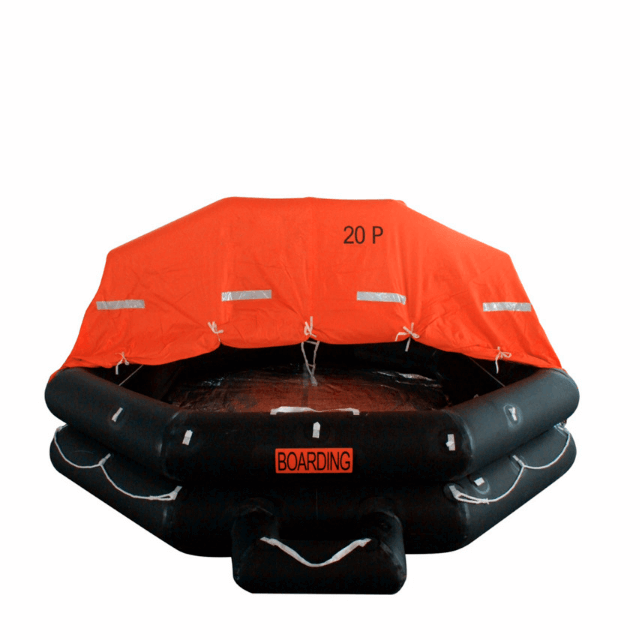
5. Regular Maintenance and Inspection
Regular maintenance and proper storage are essential for preserving the lifespan of inflatable life rafts. Routine inspections to identify and repair minor damages, such as small punctures or worn-out seams, can prevent larger failures. Proper storage in protective containers guards against UV exposure, moisture, and mechanical damage, ensuring that the raft remains in optimal condition until needed. Adherence to international safety standards, such as those outlined by the International Maritime Organization (IMO), guarantees that life rafts meet rigorous performance criteria.
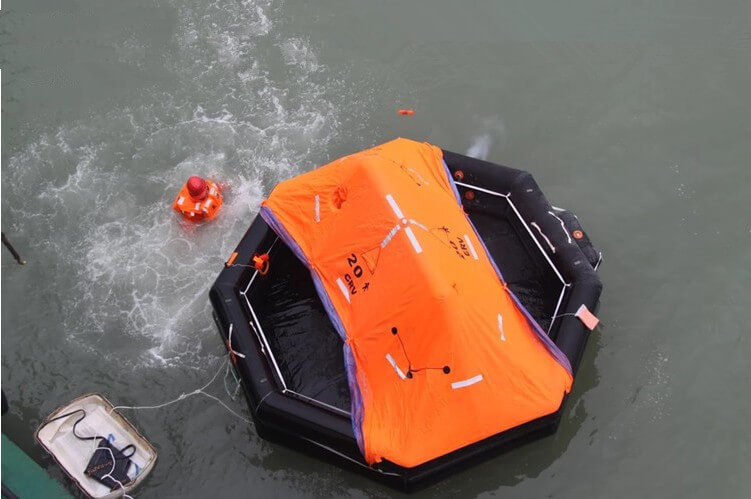
Future Trends in Improving the Durability of Inflatable Life Rafts
Advancements in materials, technology, and design are driving the development of next-generation inflatable life rafts capable of withstanding extreme weather conditions while enhancing overall performance.
1. Self-Healing Materials
One of the most promising advancements in material science is the development of self-healing fabrics. These materials can automatically repair minor punctures or tears, ensuring that life rafts remain inflated and functional even after sustaining damage. By embedding microcapsules containing repair agents into the raft’s fabric, these self-healing systems can respond instantly to breaches, minimizing the risk of deflation during emergencies.
2. Smart Monitoring Systems
Inflatable life rafts of the future are expected to feature integrated sensors that provide real-time monitoring of critical parameters such as inflation pressure, temperature, and structural integrity. These smart systems can alert users to potential issues, enabling timely interventions to prevent failures. Additionally, GPS-enabled sensors can aid in rescue operations by transmitting the raft’s location to rescuers.
3. Temperature-Resilient Materials
New materials are being engineered to endure extreme temperature fluctuations without compromising structural integrity. Advanced polymers and coatings resistant to both freezing conditions and high heat are being developed to prevent cracking, brittleness, or deformation. These materials ensure that life rafts remain operational in diverse environments, from icy polar regions to tropical waters.
4. Enhanced UV Protection
Prolonged exposure to sunlight can weaken traditional life raft materials, leading to reduced durability over time. Future life rafts will incorporate advanced UV-resistant coatings and fabrics that can withstand intense solar radiation, prolonging their lifespan and ensuring reliability during extended periods at sea.
5. Eco-Friendly Designs
As environmental concerns grow, sustainable materials and manufacturing processes are becoming a priority. Biodegradable and recyclable materials are being explored to reduce the environmental impact of life raft production and disposal. Despite their eco-friendliness, these materials are designed to maintain the durability and performance standards required for maritime safety.
6. Lightweight but Strong Structures
Innovations in material engineering are enabling the creation of lightweight life rafts without compromising strength. Advanced composites and hybrid fabrics provide exceptional durability while reducing the overall weight of the rafts, making them easier to handle, deploy, and transport.
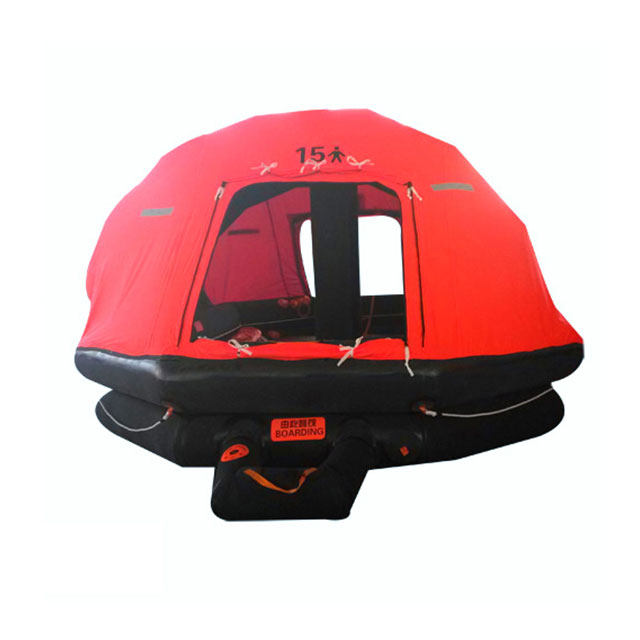
7. Modular Designs
Future life rafts may feature modular construction, allowing for easy replacement of damaged sections instead of discarding the entire raft. This approach not only extends the usable life of the raft but also reduces maintenance costs and environmental waste.
8. Advanced Ballast and Stability Systems
Enhanced ballast systems, incorporating self-adjusting mechanisms, will improve stability in rough seas. Future designs may include adaptive ballast bags that automatically adjust their weight distribution to counteract shifting loads or extreme wave conditions, ensuring that the raft remains upright and stable.
9. Rescue-Optimized Features
Incorporating high-visibility materials, reflective surfaces, and integrated lighting systems will make life rafts more visible to rescuers, even in low-light or adverse weather conditions. These features enhance not only survivability but also the durability of the raft, as they minimize exposure to prolonged search operations.
10. Predictive Maintenance Technology
Predictive maintenance systems, powered by AI and machine learning, will analyze data from smart sensors to anticipate potential failures or required repairs. This proactive approach ensures that life rafts remain in optimal condition, reducing the risk of malfunction when deployed.
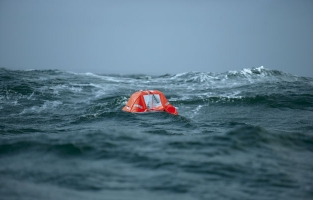
Final Thoughts
Through adopting innovative materials, advanced designs and cutting-edge technologies, manufacturers are making significant improvements in creating inflatable life rafts that can withstand the toughest environments. Regular maintenance and advancements in smart features also play a vital role in ensuring that these life-saving devices perform effectively when needed most.


